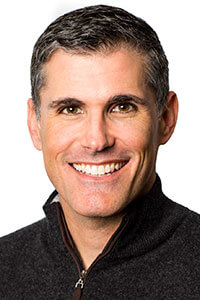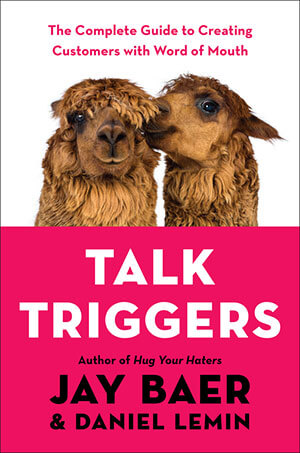
Daniel Lemin
I recently heard Daniel Lemin, who co-authored with Jay Baer the recent book Talk Triggers: The Complete Guide to Creating Customers With Word of Mouth, speak about how and why businesses should create conversation-worthy differentiators as pathways to growth. Brands that have successfully created talkable elements include The Cheesecake Factory (due to its enormous menu), DoubleTree hotels (thanks to those warm chocolate-chip cookies provided at check-in), and Five Guys (whose portion of fries is beyond generous). Much of the advice Lemin gives is applicable to organizers of events who want to generate more attendance through word-of-mouth marketing.
Right now, word of mouth is more important than ever. First, it’s pin-pointedly relevant. The recommender customizes the recommendation to fit the receiver’s perceived needs. And, as most marketers are now aware, this personalized approach is often the only way to break through clutter and noise. Second, positive word of mouth saves recipients time — a precious commodity today — by sparing them extensive research into a product or event. Finally, it’s independent, as the recommender has no financial interest in the organization. Overall, people are trusting businesses and organizations less and people more.
While most event organizers hope that word-of-mouth marketing just happens, the businesses profiled by Lemin take the opposite approach. They have a plan and a purpose for their word-of-mouth marketing. Word of mouth is just talk. Word-of-mouth marketing organizes that talk and drives it intentionally in a particular way.
Four Requirements of a Talk Trigger
A “Talk Trigger” is a word-of-mouth differentiator, but it’s not the same thing as a USP (unique selling point or proposition). Many event organizers craft their USPs around their size, comprehensiveness, and the fact that ideas and products are launched at their conference or trade show. And while these things are important, they can be discussed in a conference room. A Talk Trigger is a benefit, articulated with a story, that people will talk about at a cocktail party. Here are four telltale signs of a Talk Trigger:
- It’s remarkable. After all, when is the last time you told a friend about an adequate dining experience or a so-so keynote speaker you heard at a conference?
- It’s relevant, supporting your broader positioning and objectives. It has to make sense within the context of what you do, who you are, and what you stand for.
- It’s realistic. If you overpromise, or if your audience perceives you are doing so, it actually diminishes brand trust. So, while it has to be big enough to be noticeable, it also has to be small enough to be trusted.
- It’s repeatable, so that it’s offered to every member of your audience, every time. Any differentiator that happens circumstantially is a publicity stunt, not a word-of-mouth strategy.
Inspirational Talk Triggers

Word of mouth influences as much as 90 percent of all purchases, according to the book’s authors.
All event brands are unique, and their Talk Triggers should be a reflection of their identities. Still, I couldn’t help but jot down a few ideas as Lemin spoke. Perhaps one of these will inspire the talkable element you’ll create for your next event?
Give attendees a personalized gift at registration. Make the last question on your registration form something like, “What is your favorite kind of treat?” with multiple-choice options such as trail mix, chocolate, fresh fruit, popcorn, or pretzels. When attendees pick up their badge, also give them the special treat they identified and a complimentary bottle of water, courtesy of your organization and perhaps a sponsor or two.
Host a “Meet the Speakers” reception. As part of their contracts, require your speakers to attend a social gathering to sign books, pose for selfies, and answer questions. Give your audience the opportunity to have an experience versus just being a passive listener.
Organize “no-host” pop-up dinners (or breakfasts or lunches). Create sign-up sheets for attendees who want to discuss certain topics or mingle with like-minded — or very different — peers. Carve out on-site meeting places for them or make reservations for them at local restaurants. These can be especially welcoming for attendees traveling alone.
Transform the registration area into a welcome lounge. Create a reception area that reflects the personality of your event and how you want your guests to feel with their first on-site experience. Create a lounge with comfortable seating, play music or have screens with educational session teasers playing, serve light refreshments while guests wait in line, or have brand ambassadors engaging in conversations and answering questions.
Kimberly Hardcastle-Geddes is the owner and president at mdg, a full-service marketing and public relations firm specializing in B2B events.
More about Talk Triggers
Detective Work
The first step toward creating effective word of mouth in an organization is to unlock everything already known about your audience — what they want from your event, how they behave on site, and more. Think of it as internal anthropology. It’s important that you don’t wait for inspiration — rather that you have a team of skilled people who are delving into data, interpreting it, and then drawing outside the lines. It’s also important that this team of people includes employees from all departments; it shouldn’t just be a function of marketing.
